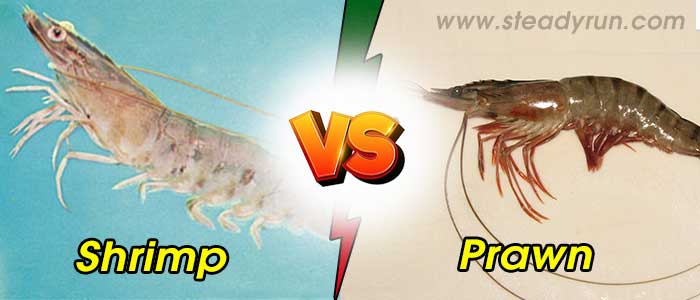Ultherapy A Non-Invasive Solution for Skin Tightening and Rejuvenation

Distinguish, differentiate, compare and explain what is the Difference between Shrimp and Prawn. Comparison and Differences.
What distinguishes prawns from prawns?
Are the prawns or prawns being served? Does a distinction exist? How can one determine the specific individual or entity being served? Is it significant? The answer is simultaneously straightforward and intricate. From a culinary standpoint, there is minimal distinction between the two. A physiological distinction exists between prawns and prawns. Nevertheless, in the United States, both words are employed interchangeably. The presumption is that the term "shrimp" pertains to diminutive dimensions, whilst "prawn" pertains to more substantial specimens. Furthermore, in the United States, the term "shrimp" is frequently employed, although in the United Kingdom and Australia, "prawn" is the prevailing designation.
There exist more than 300 distinct species of prawns and prawns distributed globally. Both can be found in both saline and aqueous environments, as well as in bodies of water with varying temperatures. The typical age of prawns and prawns is approximately 5 years or under. Both species commence their lives as males, but transition to females between the ages of 2 and 3 for the rest of their lives.
What precisely distinguishes a prawn from a prawn? Prawns belong to the Dendrobranchidae sub-family. They are characterised by their bigger size, branching gill structure, longer front legs, larger second set of pincers compared to the front set, internal egg storage near the tail and longer eggs compared to prawns.
Shrimp, belonging to the sub-family Pleocyemata, exhibit a smaller size, possess a lamellar gill structure, somewhat shorter front legs, larger front pincers, transport their eggs externally beneath their tails, and possess smaller eggs.
What is the significance of taste?
The distinguishing flavour between a prawn and a prawn is not conclusive. Both prawns and prawns exhibit similarities in their fundamental flavour characteristics, with the principal distinctions in taste and texture arising from variations in nutrition, habitat, and geographical location, rather than the specific species of prawn or prawn. Nevertheless, the majority of chefs concur that, similar to lobster, a cold water prawn or prawn surpasses their warm water counterparts. Cold water prawns exhibit a higher degree of sweetness, tenderness, and succulentity. In general, it can be seen that wild shrimp/prawns generally exhibit a more pronounced flavour profile in comparison to farmed shrimp/prawns of the same species.
Is Langoustine or Langostino a suitable option? They do not belong to the prawn or prawn families, but rather belong to the lobster family. Additionally, they are erroneously known as Dublin Bay Prawns.
Difference between Shrimp and Prawn
Americans say shrimp; while Aussies and British say prawn - but are these really two names for the same thing or is there a difference? Those who use both terms might say that prawns are the big ones and shrimps are the small ones. Wrong! Actually shrimps and prawns are different species. Lets see main difference between Shrimp and Prawn here:
1. Shrimp are smaller, have shorter legs and have claws only on two pairs. Prawns are larger in size, and have larger legs with claws on three pairs.
2. In Shrimp, gills are lamellar, i.e. plate-like. Prawns have branching gills.
3. Shrimp are decapod crustaceans belonging to the sub-order Pleocyemata. Prawns are decapod crustaceans belonging to the sub-order Dendrobranchiata.
4. Shrimp are generally smaller than prawns. Prawns are typically larger than shrimps.
5. Shrimp feature lamellar gills, which are plate-like in structure. Prawns have branching gills.
6. The front pincers of shrimp are typically the largest. The second pincers of prawns are larger than the front ones.
7. Shrimp have shorter legs and have claws only on two pairs of legs. Prawns have longer legs than shrimp. Also, prawns usually have claws on three pairs of their legs.
Types of Shrimp and Prawns
The Chef encounters a notable drawback when seeking a certain variety of prawn or prawn. If one is in search of Tiger Prawns or Alaskan Spot Prawns, it is fortunate that these market designations pertain to distinct species. However, a significant number of other shrimp species can be classified into broad groups, such as "Gulf Shrimp," "White Shrimp," "Pink Shrimp," and so forth. For example, when I purchase a Pacific White Shrimp from my supplier, they are sent in a box labelled "white shrimp" without any explicit indication on the packaging regarding the specific species of white shrimp. I would greatly appreciate it if the Latin name of the shrimp was provided. However, it seems that the Pacific White Shrimp (or any other shrimp with a generic name) can only be obtained from a vendor who is aware of the shrimp enterprises that carry out the harvesting and packaging of that particular species. Certain species are offered under a branded name instead of a species name, indicating that purchasing a specific brand will result in obtaining the corresponding species.
Tags:
Difference between Prawn vs Shrimp
Shrimp vs Prawn
Differences between Prawn vs Shrimp
Image Credits: Freepik








